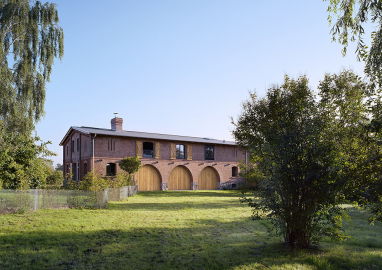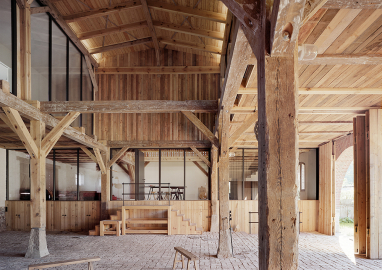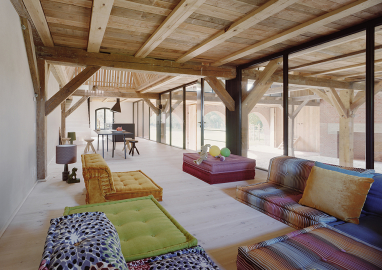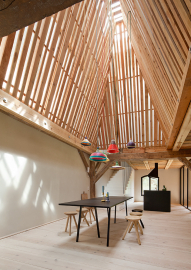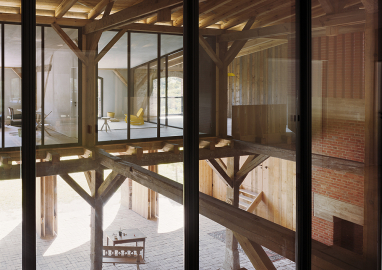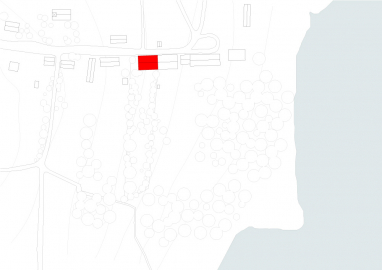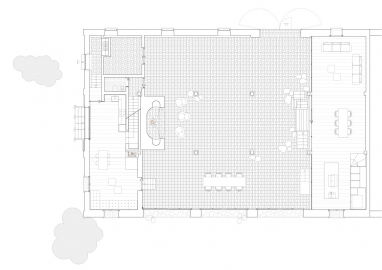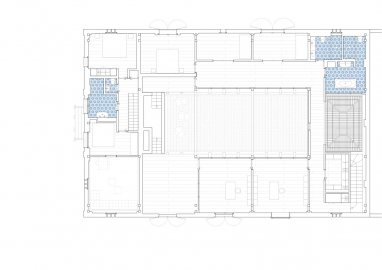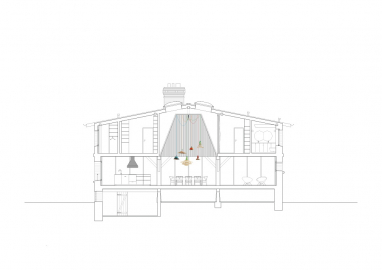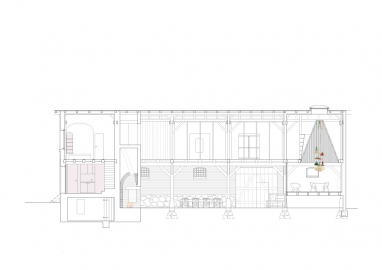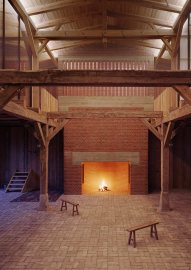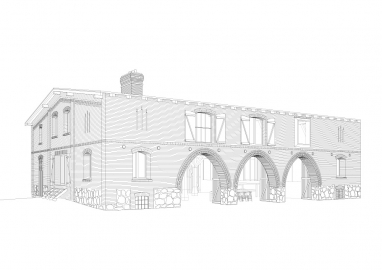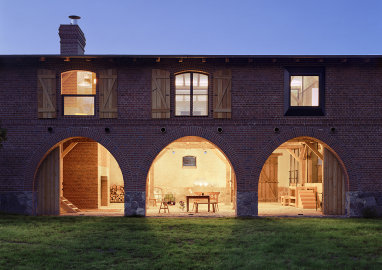Barn
Conversion of a former cowshed into a country house taking into account its historic tectonic elements and spatial atmosphere
In a small village in the Uckermark, a scenic rural area north of Berlin, a former barn was carefully converted into a country house for a young family of four with a second apartment for guests.
Built 140 years ago in a mixed construction of brick masonry and timber, the barn was an ultramodern utilitarian building. After being sold and divided, the structure subsequently had been converted into semi-detached homes for two settler families and their cattle in the fifties. One half has now been redesigned by our office reinventing the pre-existing visual language of the house and adapting it by its own means and rules. The former cowshed along with the barn is an extremely stable building with thick stone walls, small windows upstairs and a large wooden gate below. Rather than looking like a holiday home, we wanted to keep the barn’s old appearance even after the conversion.
Working with existing buildings while respecting their inherent qualities is always a challenge. In this case the big size of the barn allowed us to invent a spacious double height hall in its centre with a new large fireplace for cold days. The hall, itself not heated, is surrounded by an enclosed and insulated body of rooms with one apartment on either side of the hall and bedrooms, bathrooms, a study area and a loggia upstairs. When outside temperatures drop, only the elevated parts of the house are used, like a bird’s nest.
We retained the appearance of the street façade with its small windows making the transformation barely visible seen from the village. To open up the interior to the landscape we introduced three big arched gates bringing light into the large common space. When the three large wooden gates and surrounding openings are closed they contain a ‘secret surprise’.
A slightly elevated living room and an open kitchen adjoin the hall. The dining area is topped by a wooden pyramid filtering the light from a skylight above alluding to memories of a wooden cratch. The guest apartment is entered separately but also has a small connection door to the central hall.
In the early 50s a quarter of the barn had been converted in to a home for a farmer. As we had to strip the cladding off the timber structure in order to replace rotten beams, we demolished this part. 70 % of the timber had to be replaced during the process. The inherent beauty and the spaciousness of the construction were revealed. The building was carefully restored and upgraded with a considered approach to energy. All rooms, whether heated or not, are clay plastered and have the same surface qualities throughout. The walls of the heated units are insulated on the inside and equipped with wall heating.
The original barn had no fireplace. We introduced the massive, room-like brick fireplace with seating niches to either side of the hearth. Winters are very cold in the region and the fireplace has already proven its function as a family meeting place. It offers a human-scaled warm retreat in the large hall. The volume also connects the rooms on the first floor behind a brick screen.
As it is difficult to see the degree of intervention, the barn structure works harmoniously with the newly introduced materials and the spatial concept without transforming it in to a ‘classical house’.

